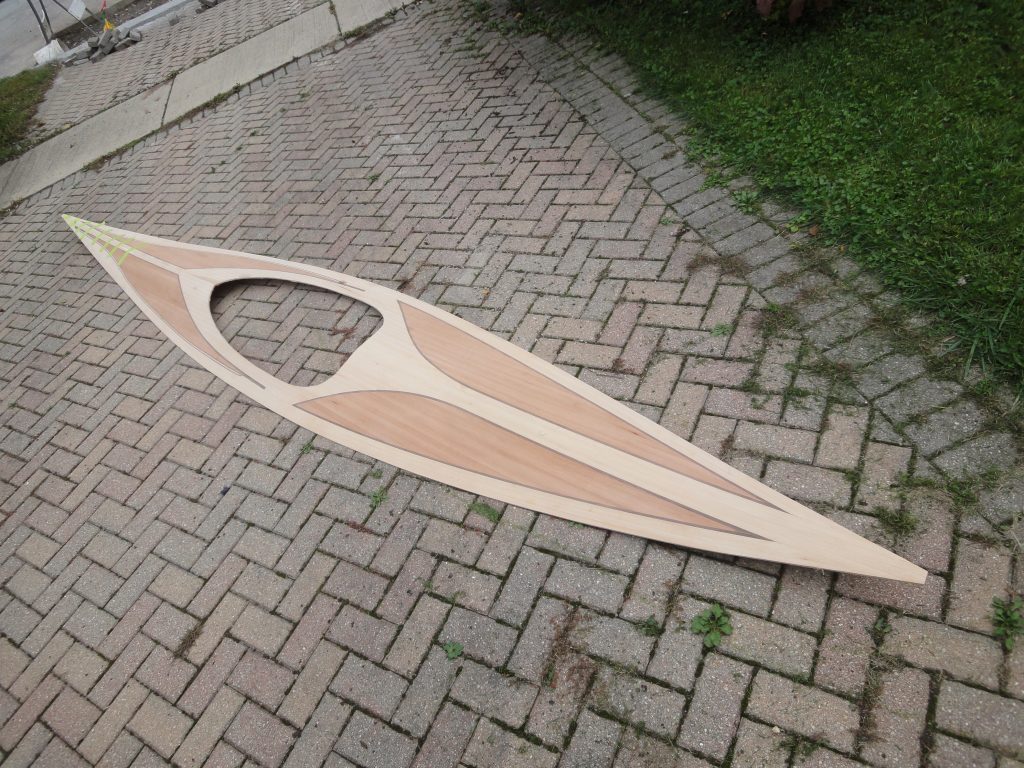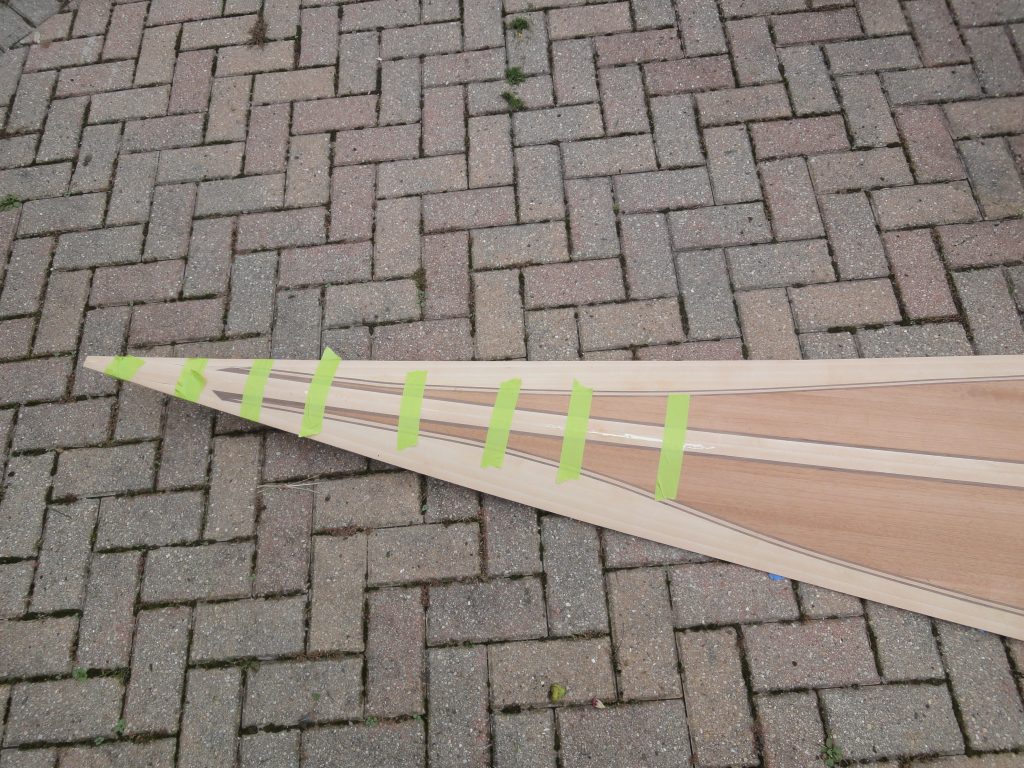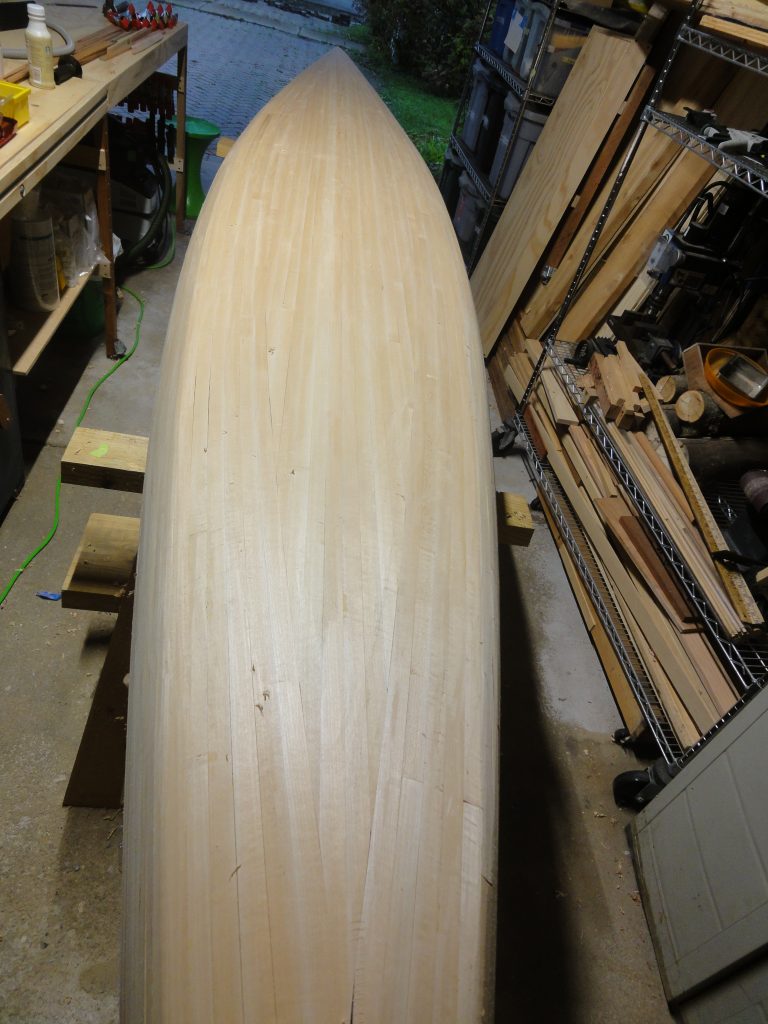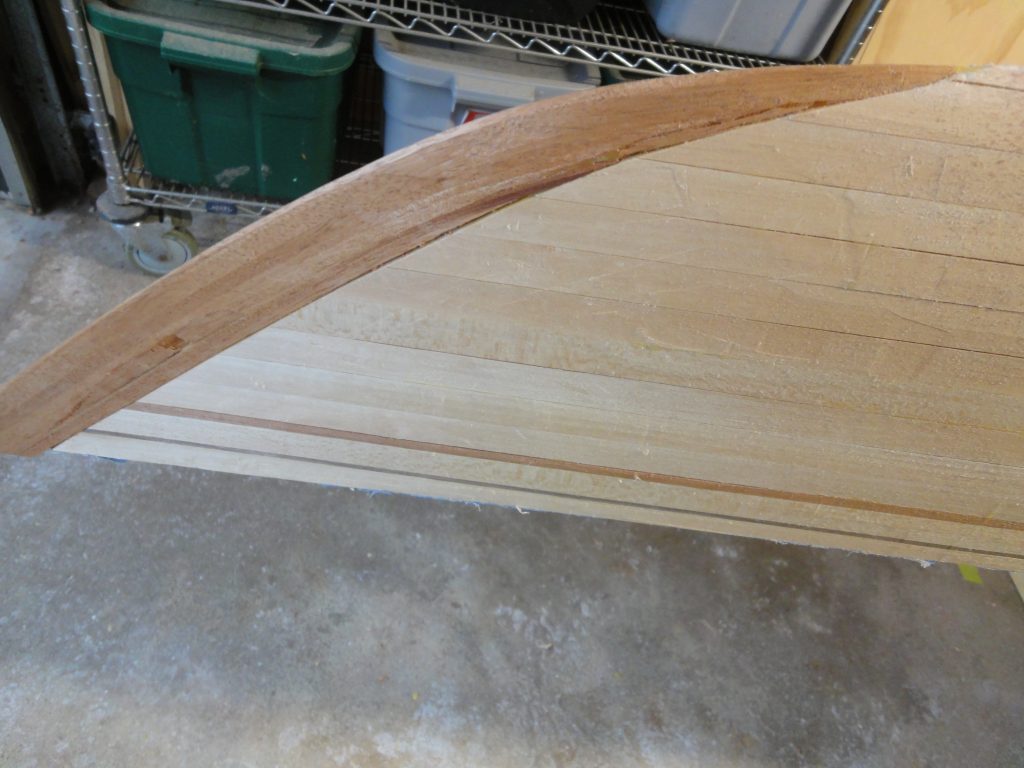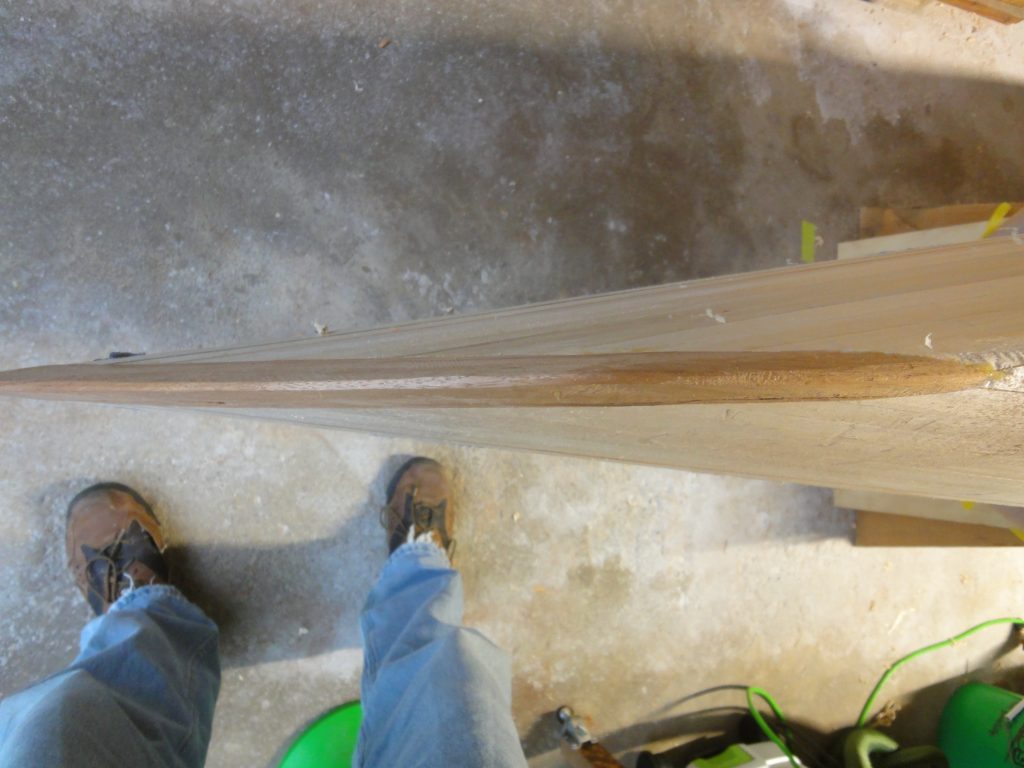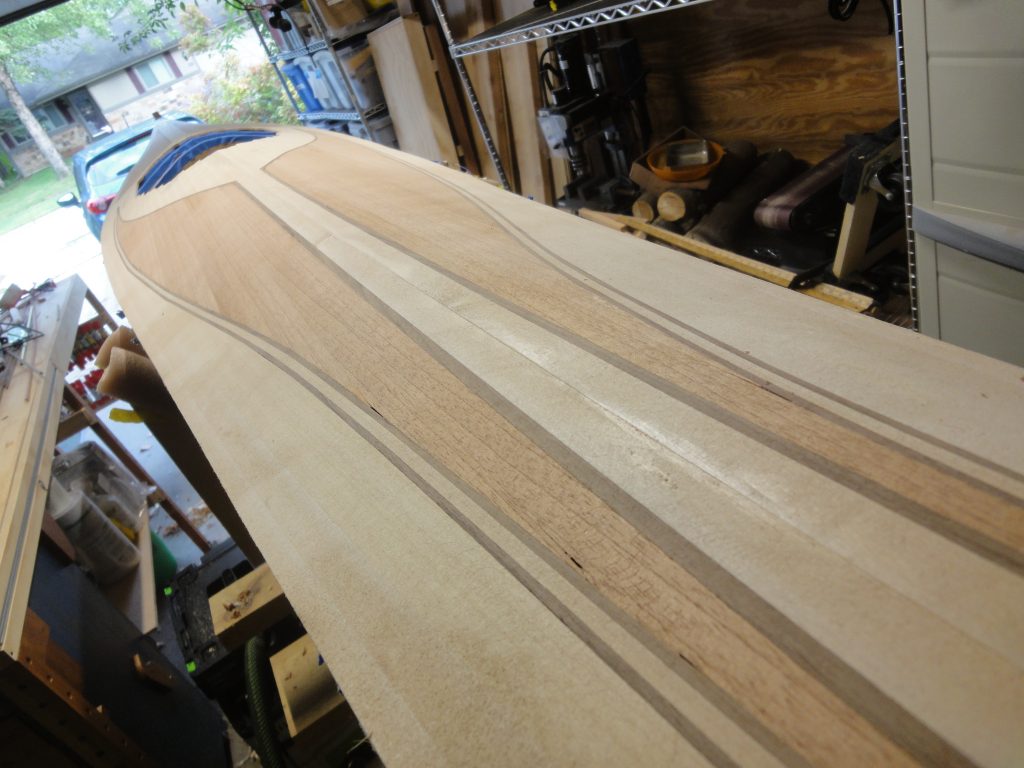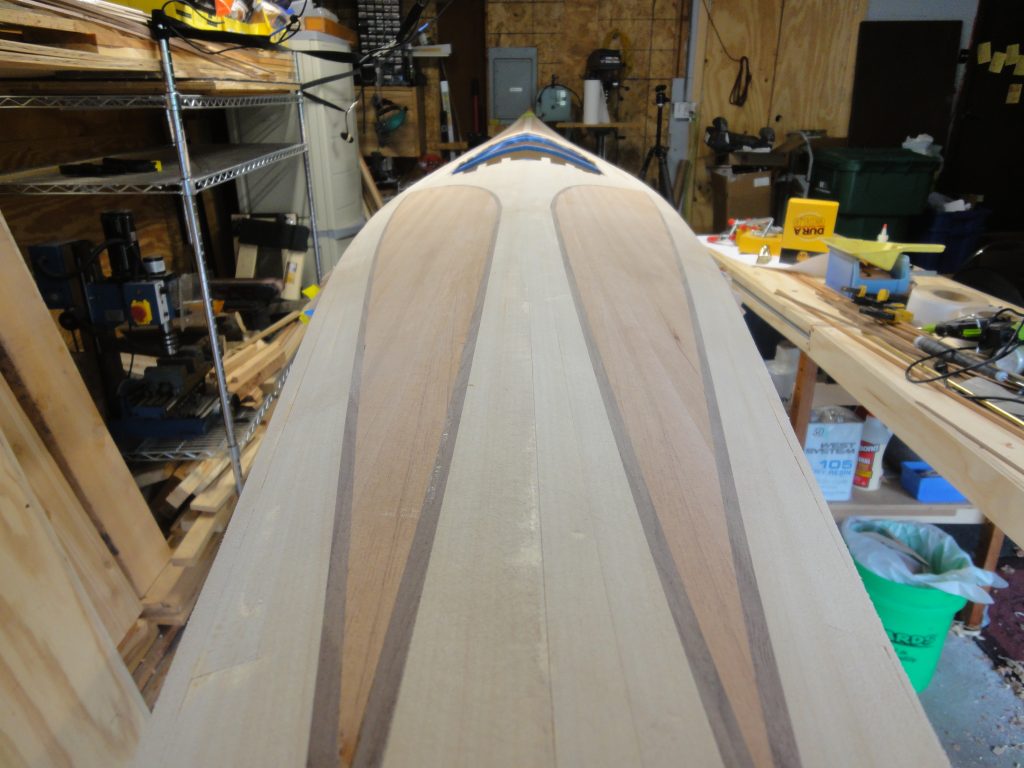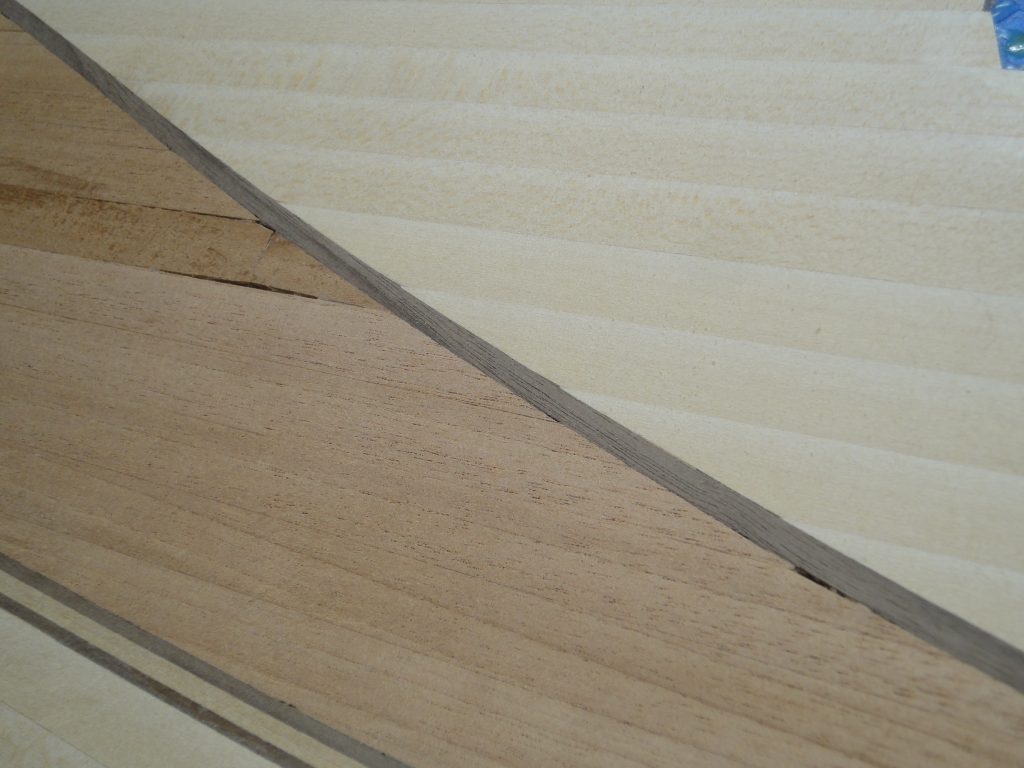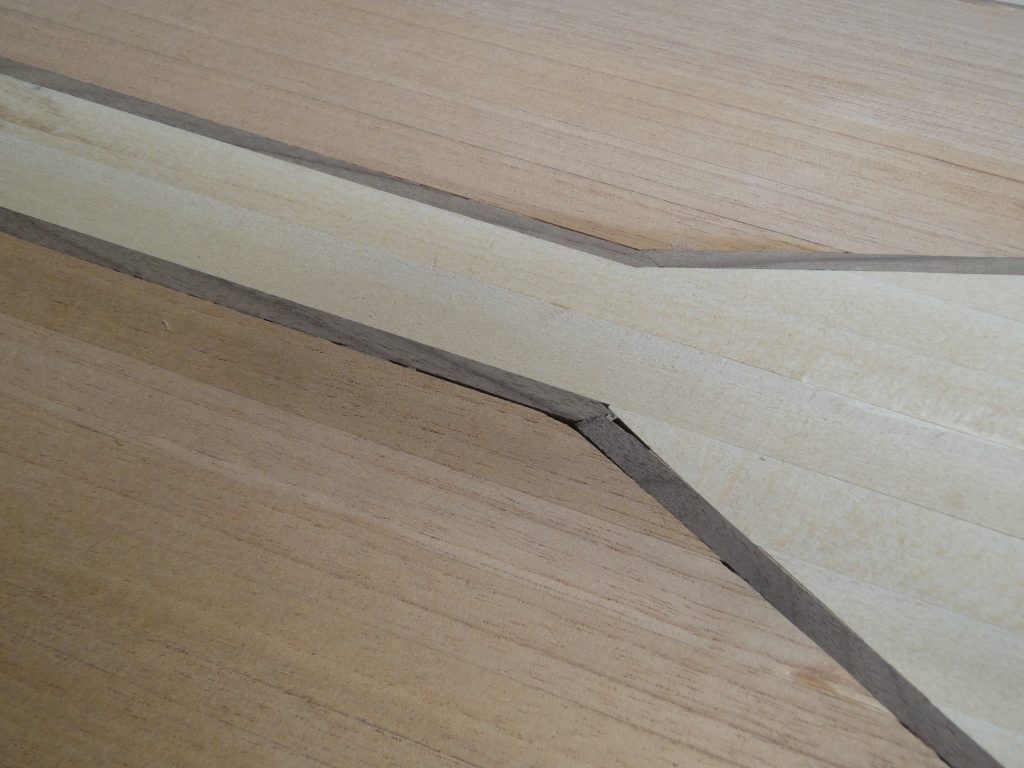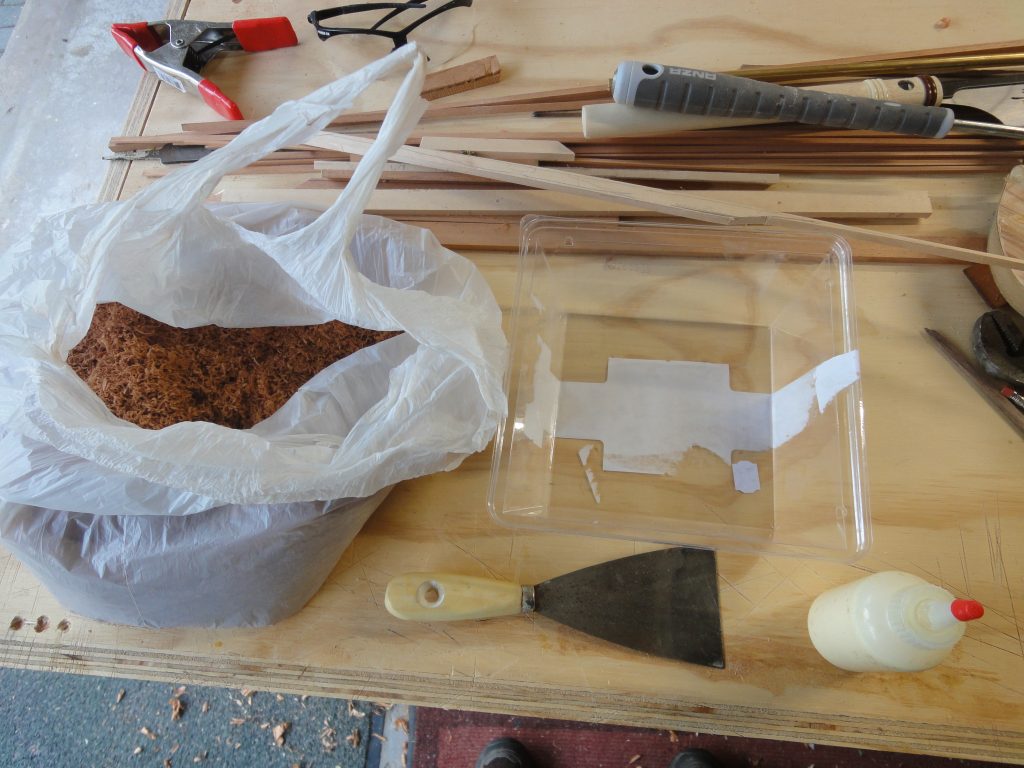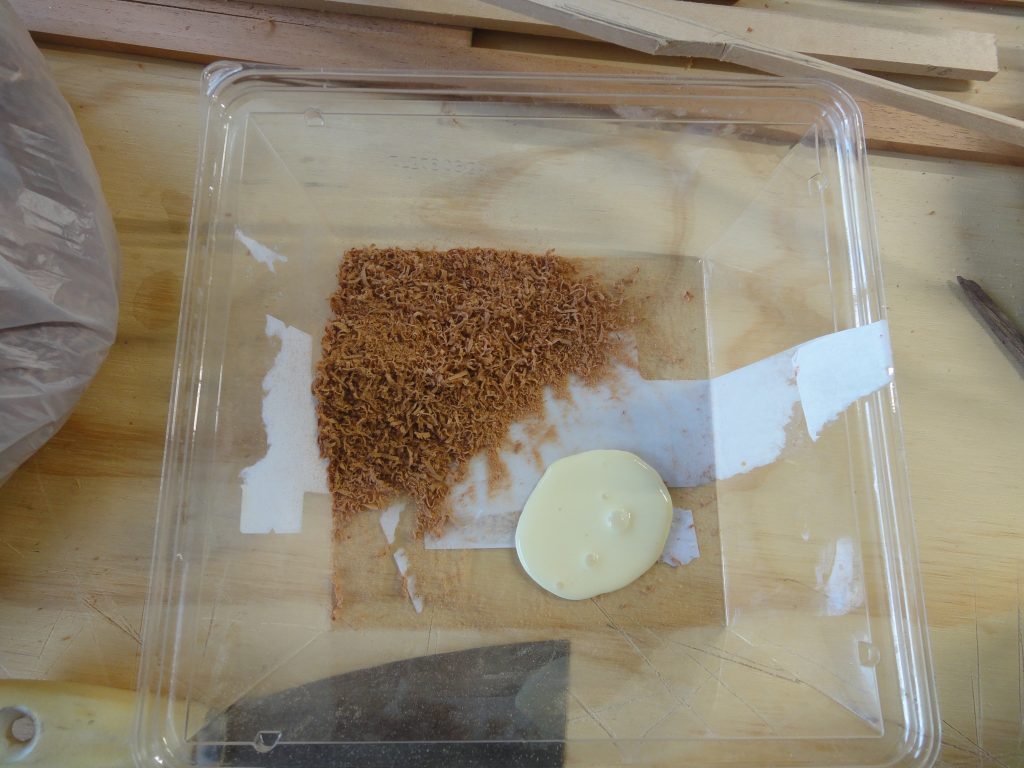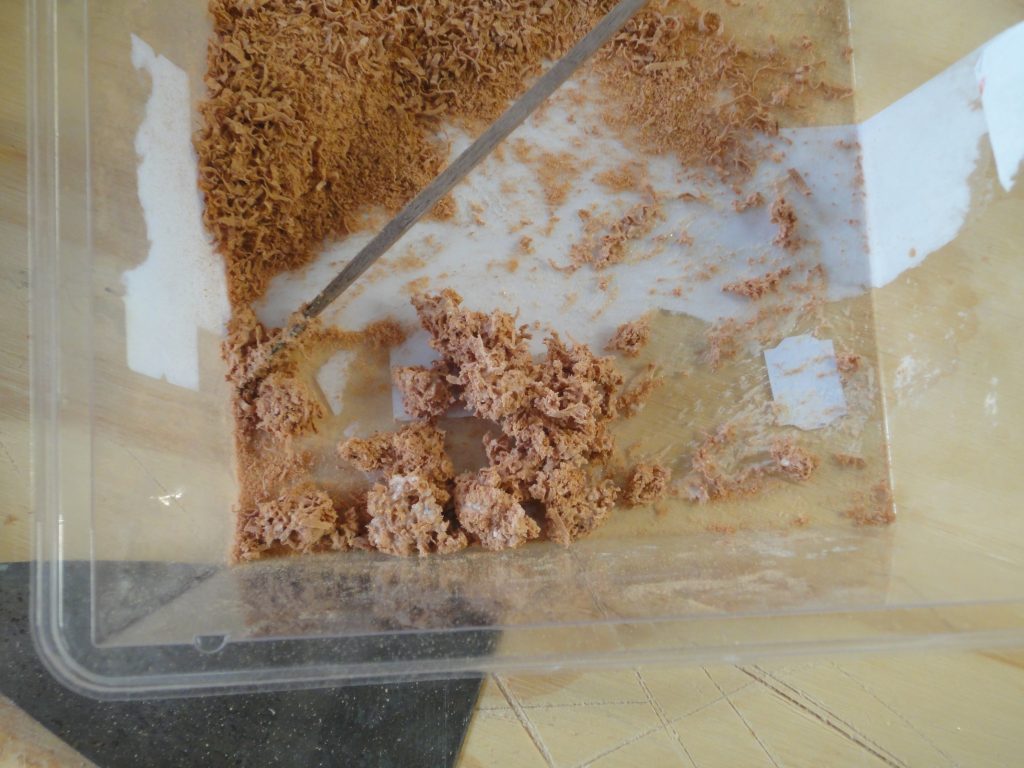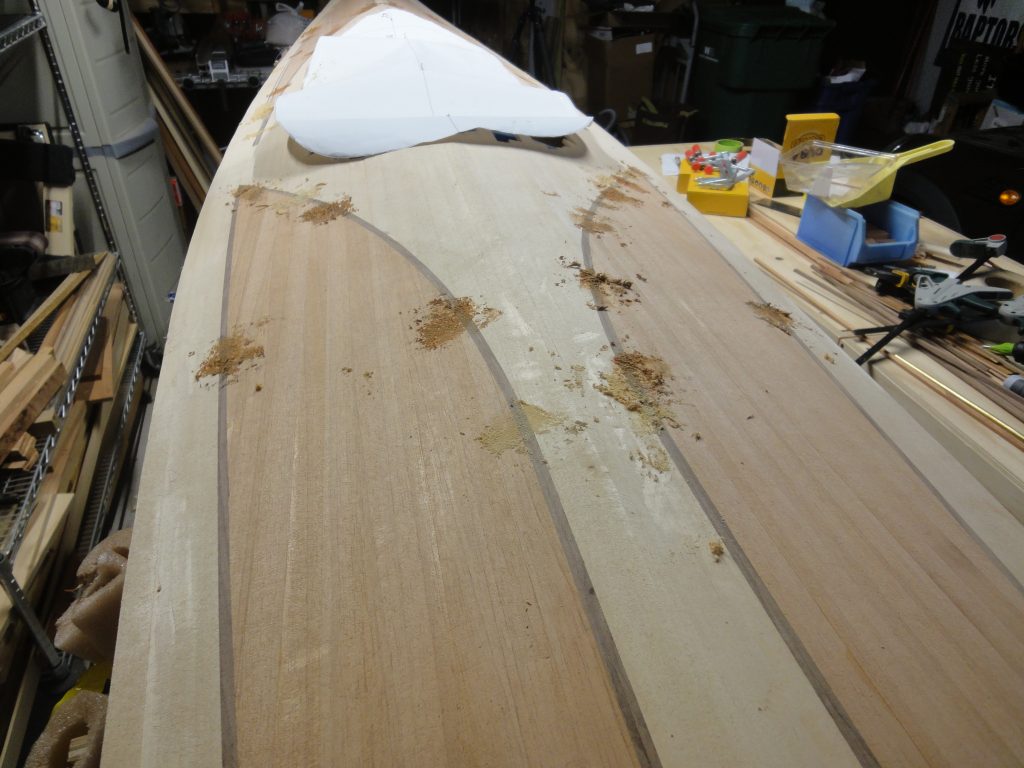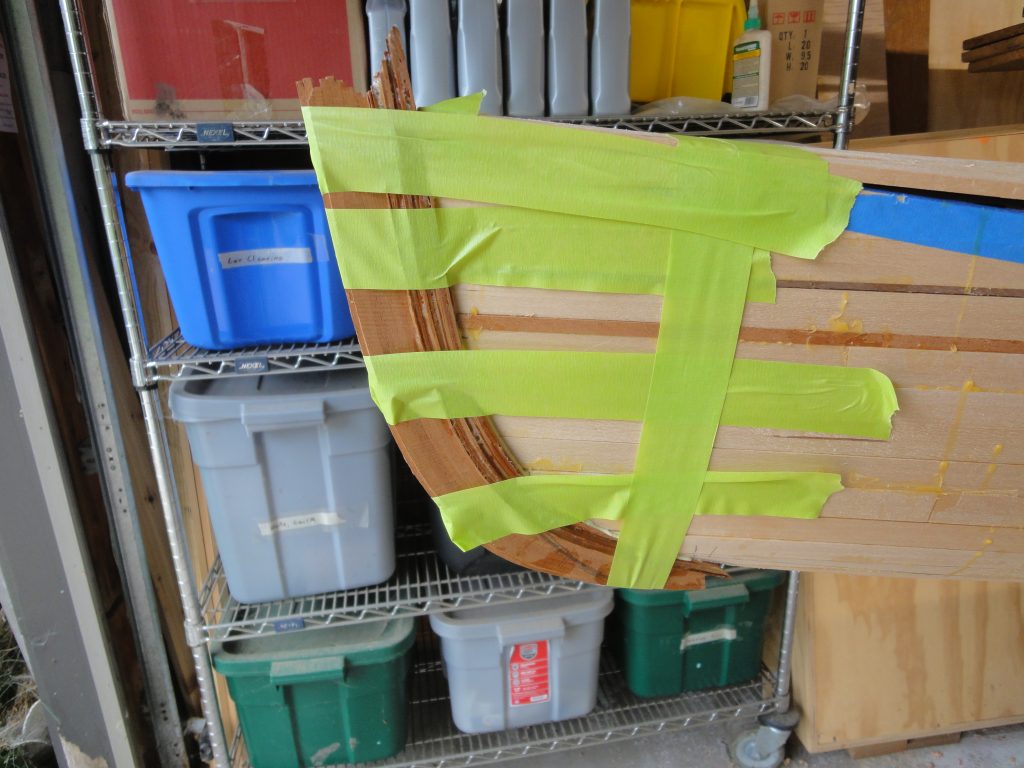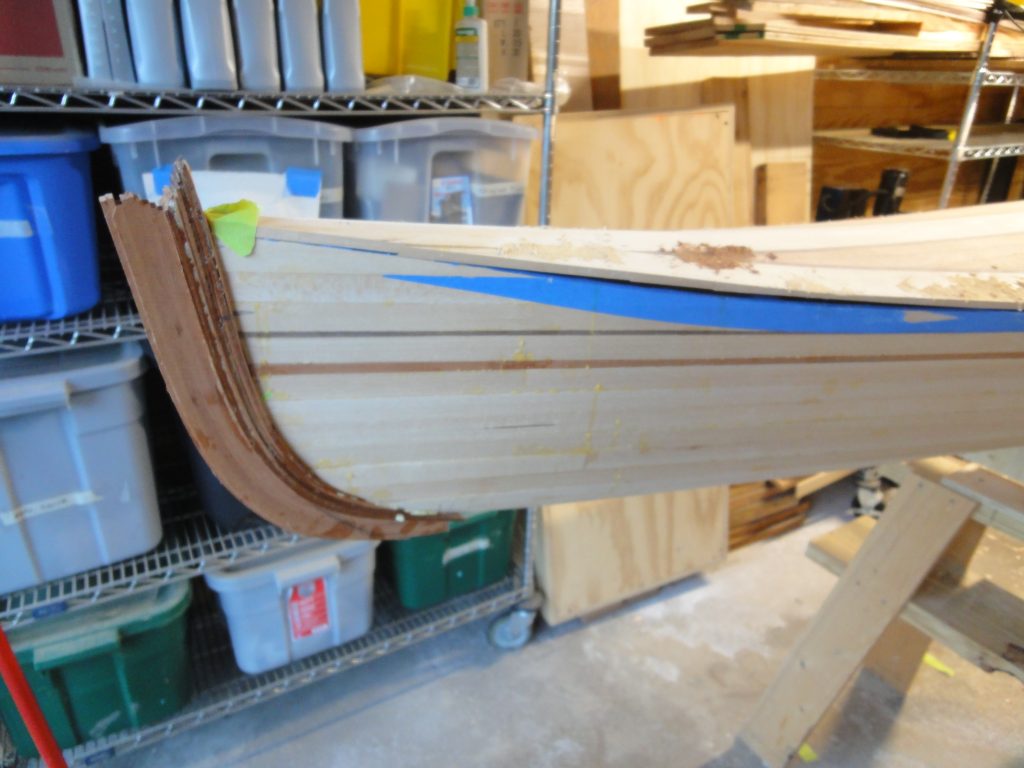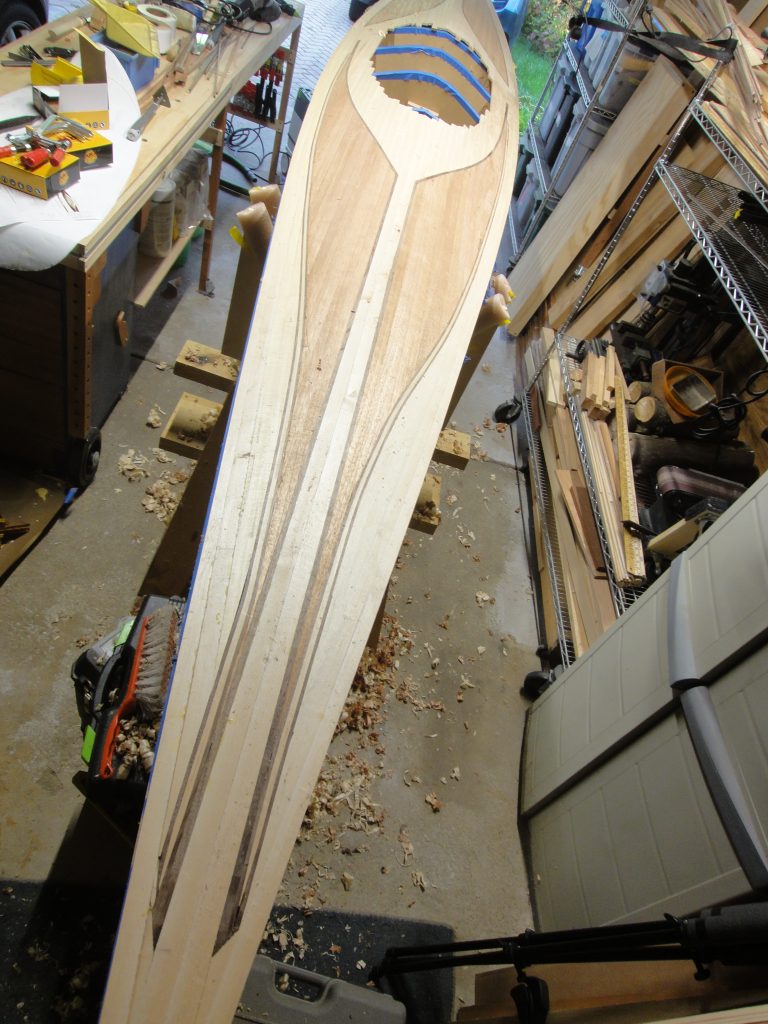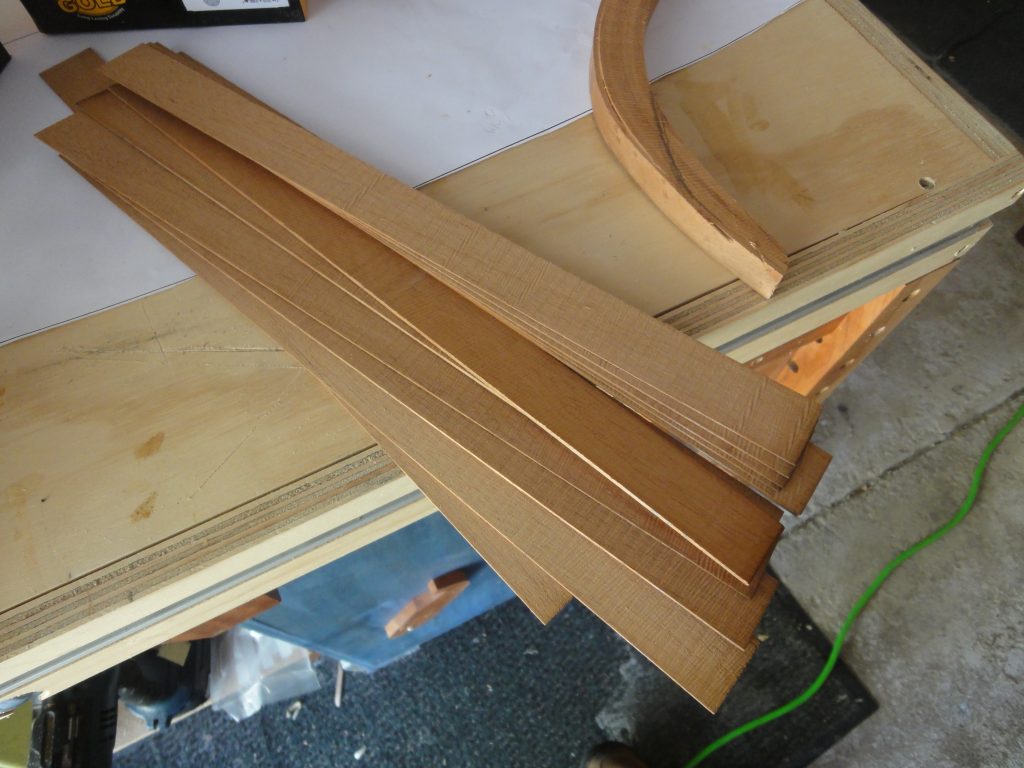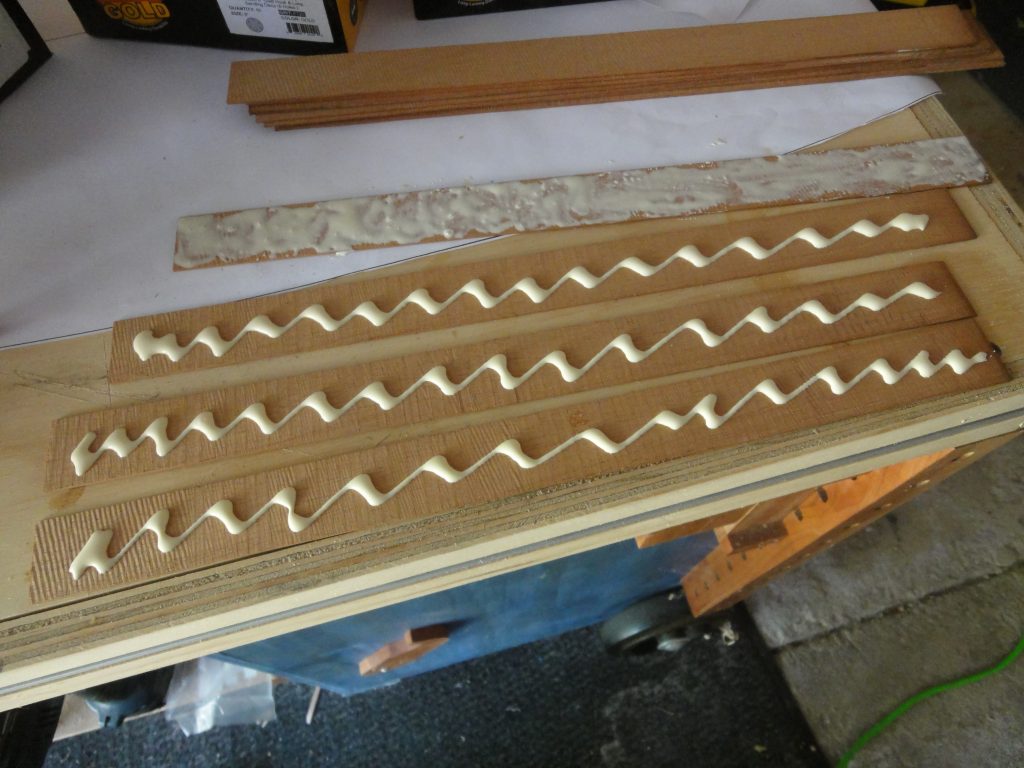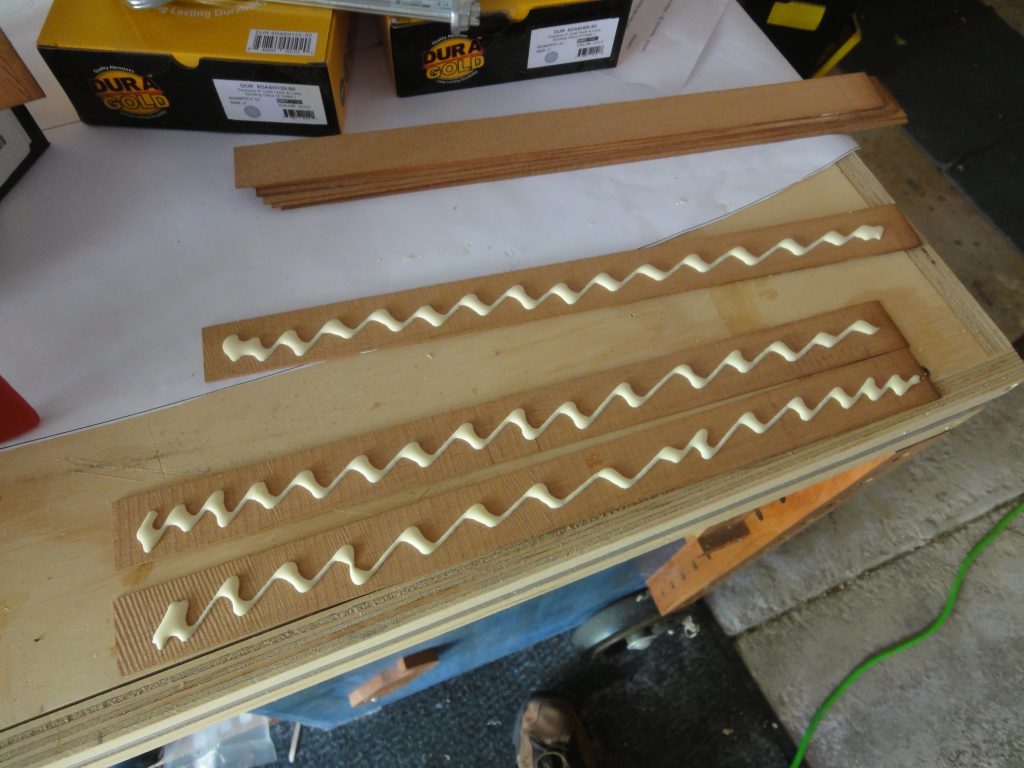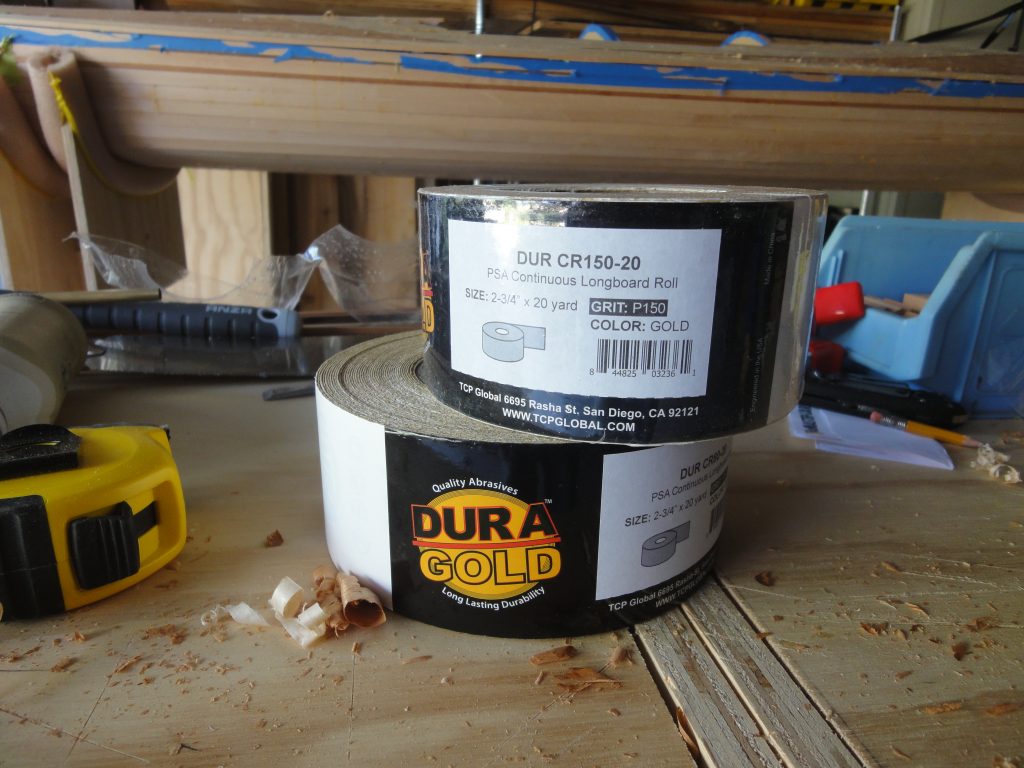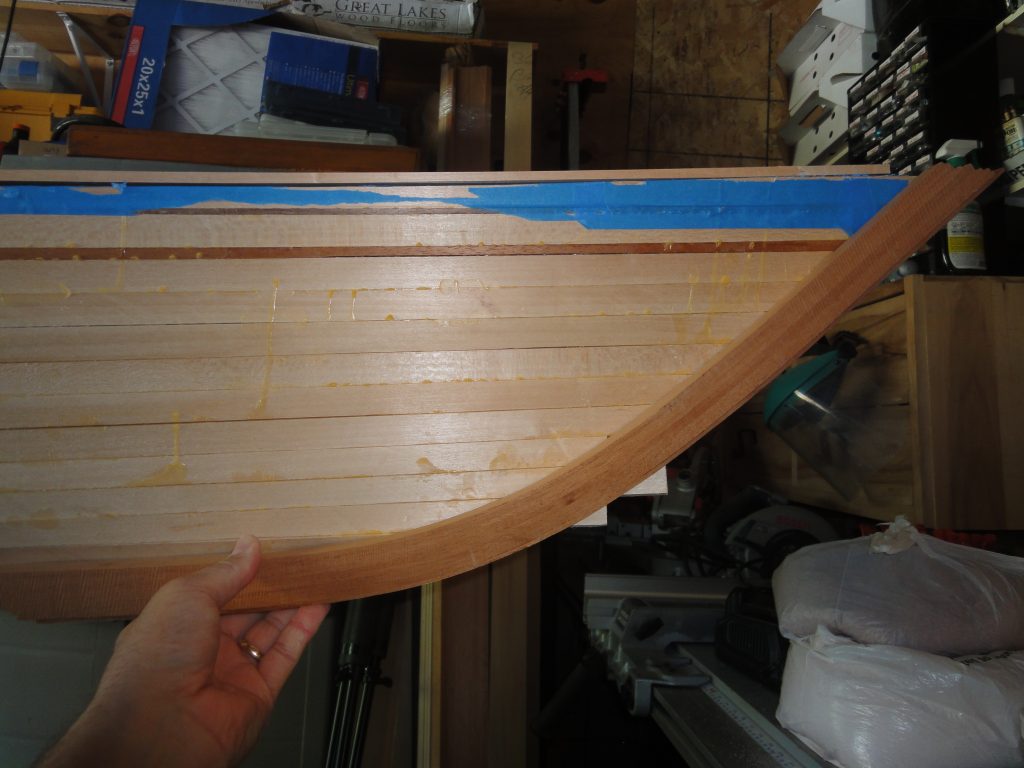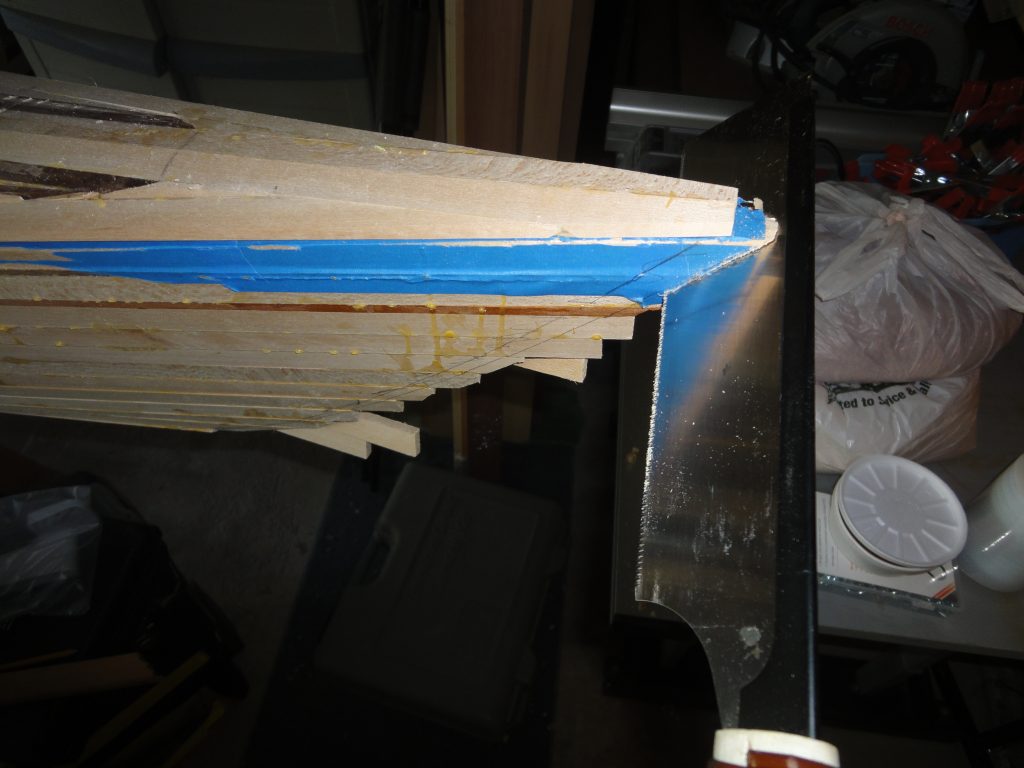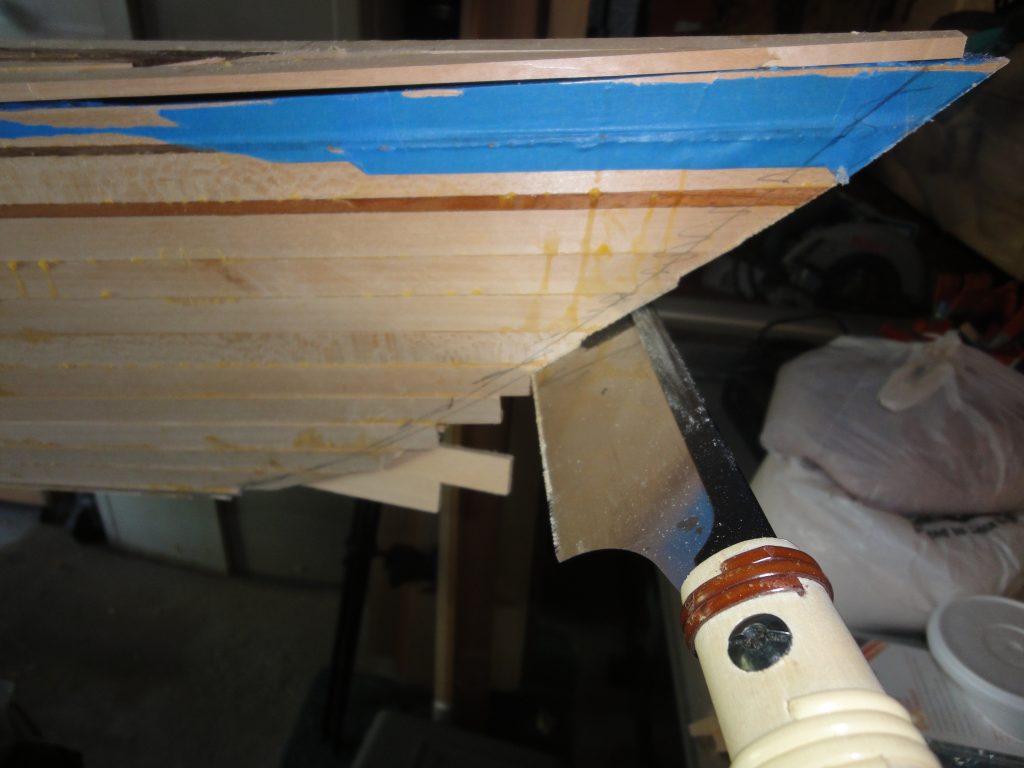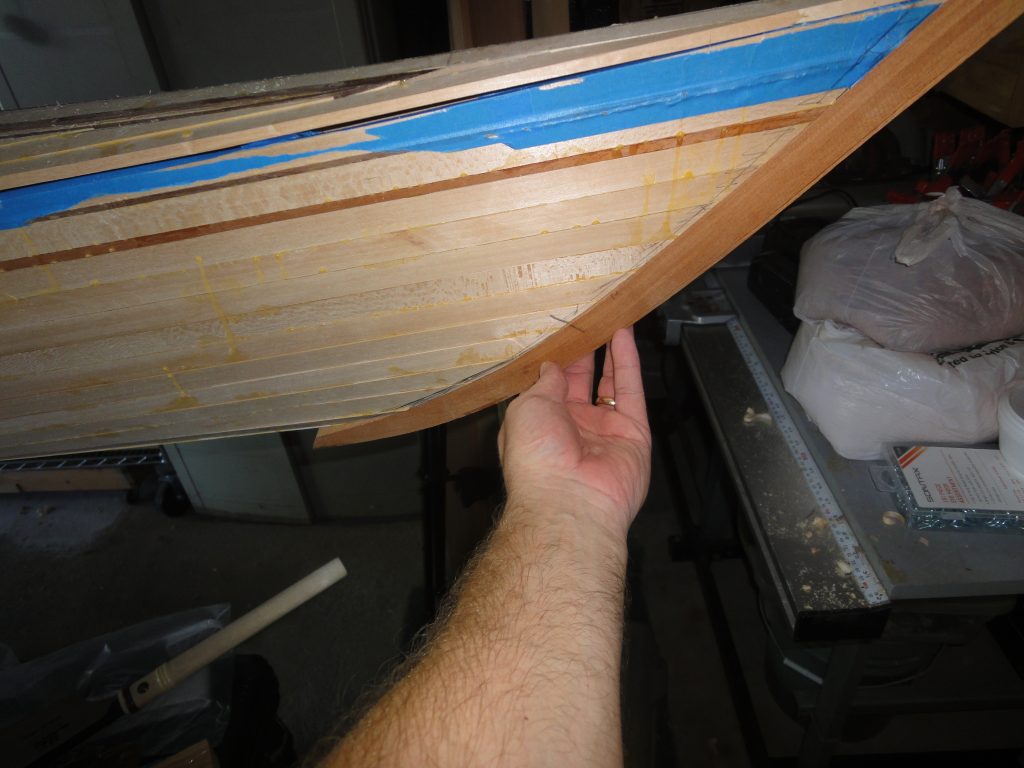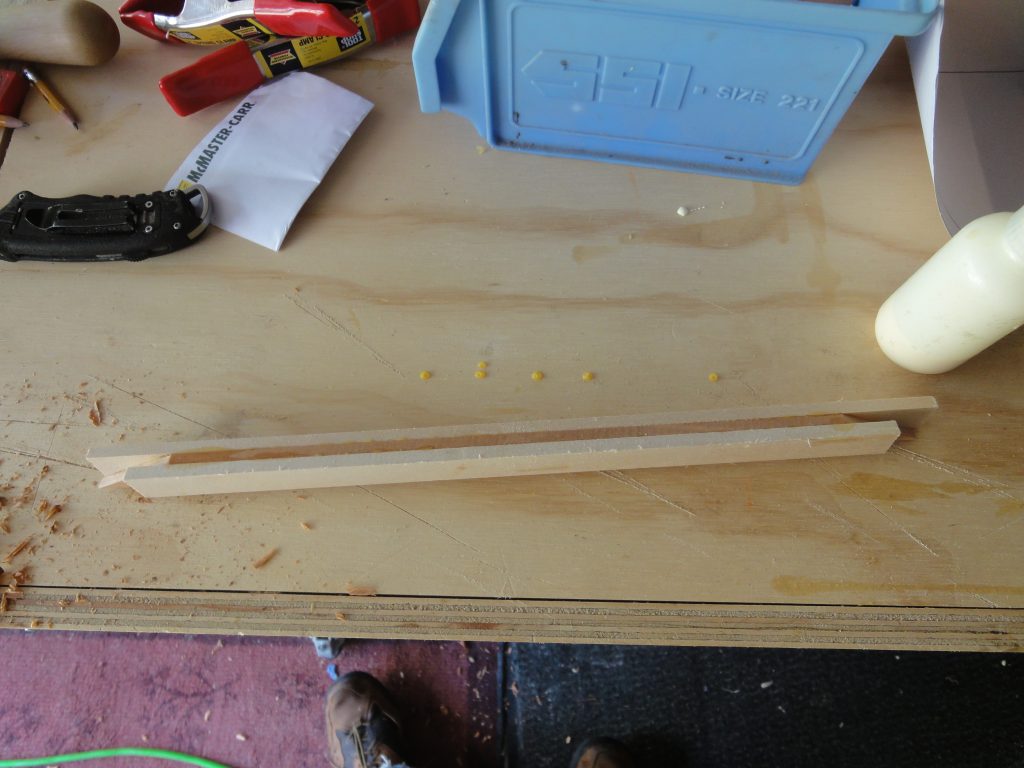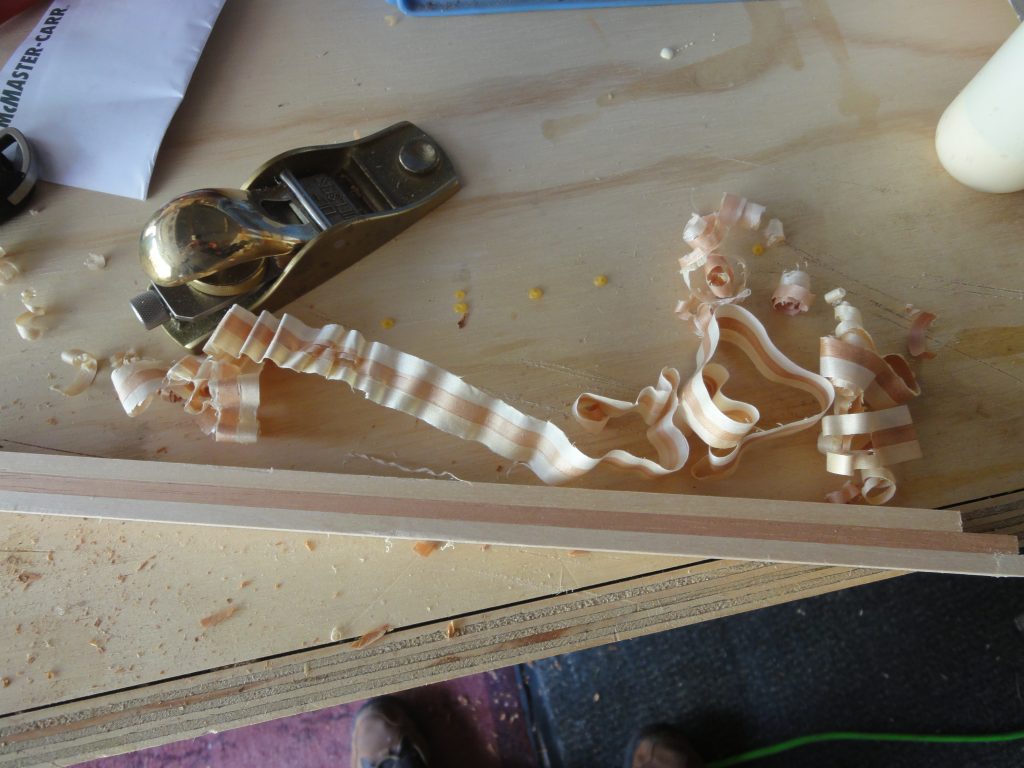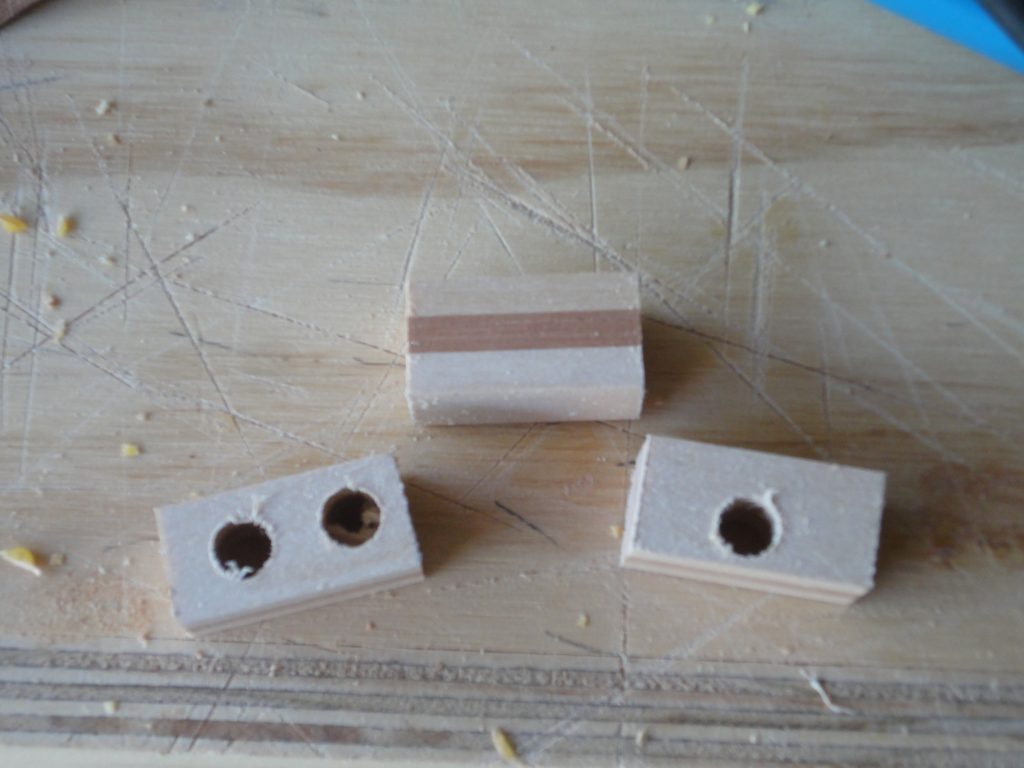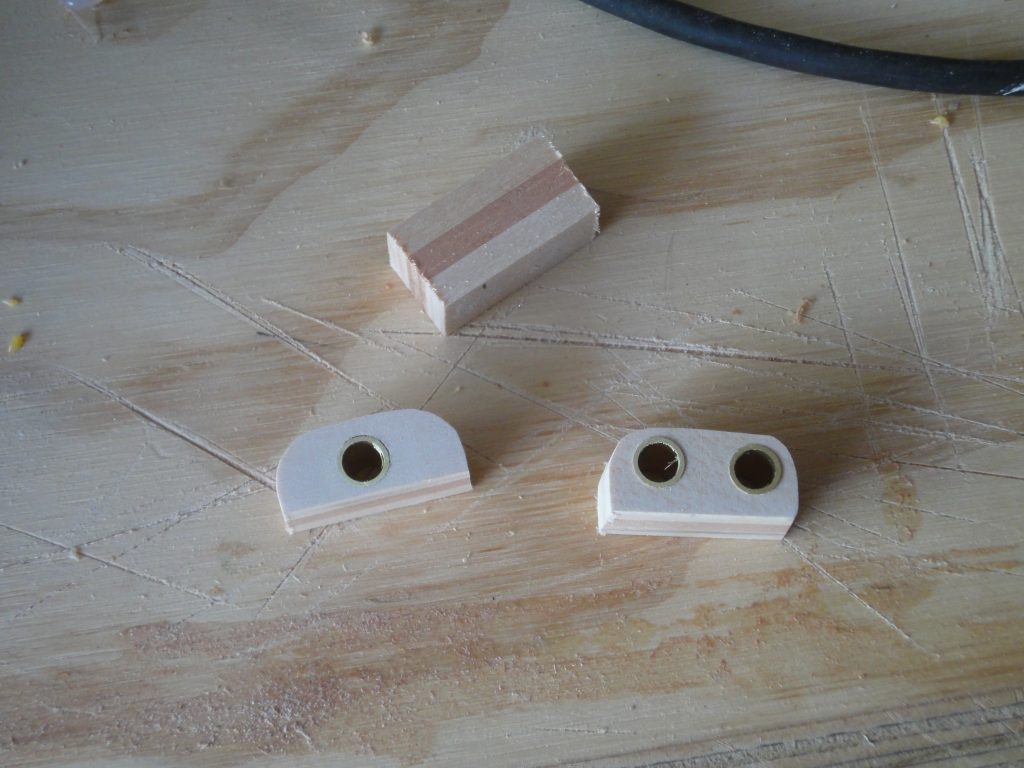Today’s work was planned to remove the deck, flip the form over and start working on the outside of the hull. Half the deck popped off the forms pretty easily. The front half started to separate at the center seam.
Working carefully I was able to fully remove it. So, first task was to now fix the Deck which was pretty much tape and glue. At a future date I’ll have to re-scrape and sand this area.
Scraping was performed pretty much as discussed before. First a high angle scrape to remove the hot glue spots, then a low angle to scrape to shave off the wood glue and the high spots on the strips. Excessive height differences were hit with a few passes of the plane first. Over all it was a little over two hours of scraping. Next work session I’ll probably do a little touch up, but essentially it’s ready for the first sanding. I would have considered starting this but I found my HEPA vacuum bag was filled and I don’t want to just throw a bunch of dust in the air. More bags ordered. I’ll have to find something else to work on tomorrow if I can get out there.
At the ends I scraped the hull right into the stems and the stems into the hull. Once I got both at about the same height I was able to scrape across and get a nice flow between them. The very edge was rounded over a bit. I considered keeping it sharper but am worried about the fiberglass folding over it and the likelihood of damaging it if or when a bow bumps into something (dock, rock, etc). By rounding it over there won’t be a point driving the fiberglass into whatever was bumped. The round over is small so it’s not going to create any problems cutting through the water.
I did find a few substantial gaps in the strips. Unlike the smaller ones on the deck which were easily filled with the “putty” I made up, these are a bit bigger and I think I will try a different approach on them.

